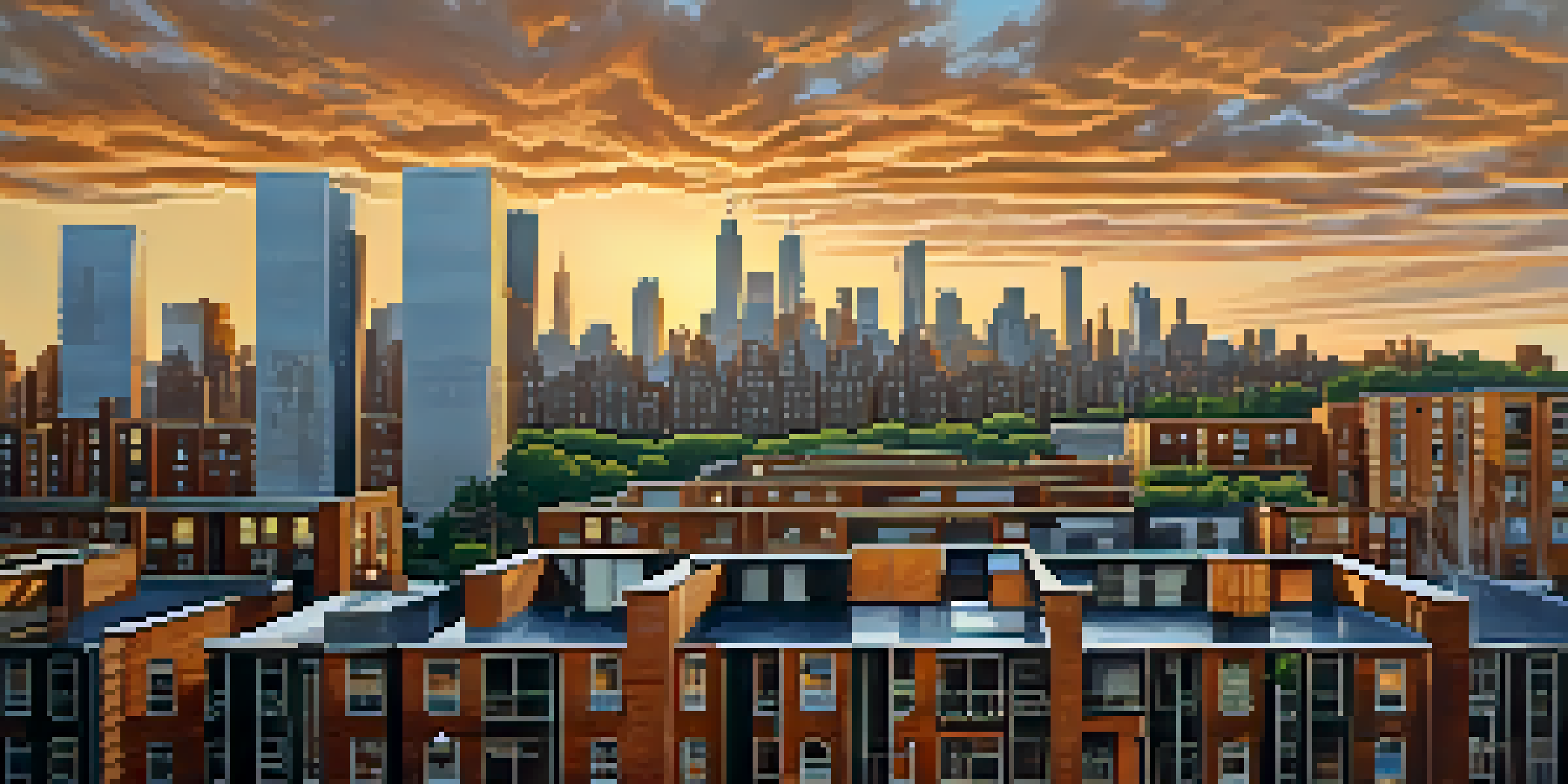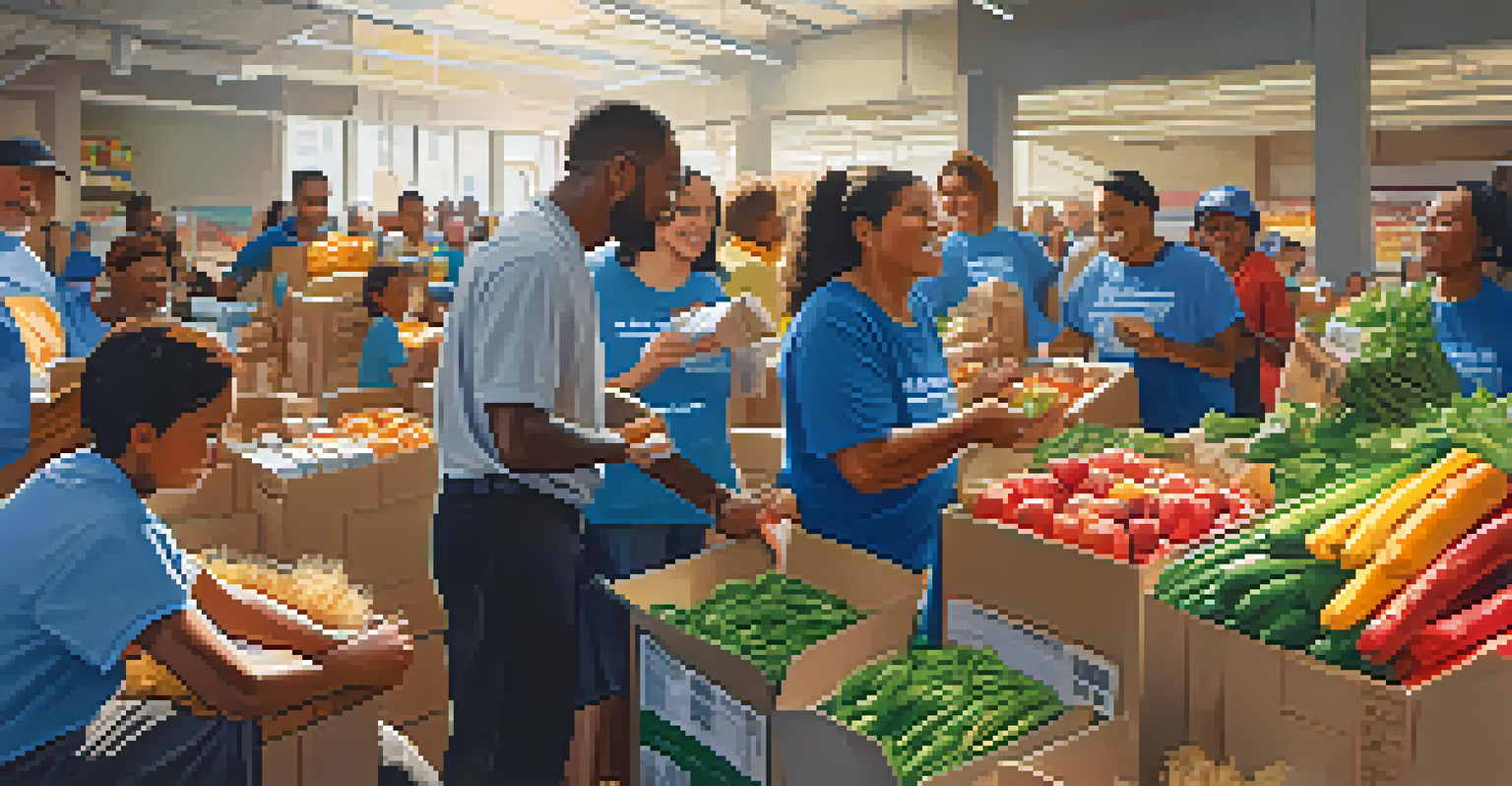Exploring Economic Inequality: A NYC Resident's Perspective

Understanding Economic Inequality in NYC
Economic inequality refers to the unequal distribution of wealth and resources among individuals in a society. In New York City, this gap is particularly pronounced, with the rich getting richer while many struggle to make ends meet. The stark contrasts between neighborhoods, such as the luxury of the Upper East Side and the challenges in parts of the Bronx, illustrate this divide.
Economic inequality is not just an issue of wealth, it is about the opportunities that people have to live a decent life.
For a New Yorker, the effects of economic inequality are often visible in daily life. The sight of luxury high-rises standing next to public housing units serves as a constant reminder of the disparities. This stark juxtaposition raises questions about access to opportunities, education, and basic services for those on the lower end of the economic spectrum.
As we explore these inequalities, it's essential to consider not just the numbers, but the real human experiences behind them. Each statistic represents a story of struggle, aspiration, and resilience. Understanding these narratives is crucial for addressing the issue and fostering empathy in our communities.
The Role of Education in Economic Disparities
Education is often touted as the great equalizer, but in NYC, access to quality education can be heavily influenced by one's zip code. Wealthier neighborhoods typically have better-funded schools, creating a cycle where affluent children receive superior education and resources. In contrast, underfunded schools in less affluent areas struggle to provide basic educational needs.

The disparity in educational opportunities doesn't just affect students; it has long-term implications for the workforce and economy. A poorly educated workforce can lead to higher unemployment rates and lower economic productivity, further entrenching economic inequality. This cycle perpetuates the divide, making it challenging for individuals from low-income backgrounds to break free.
Economic Inequality in NYC
The disparity in wealth distribution in New York City is stark, with affluent areas contrasting sharply against underprivileged neighborhoods.
As a NYC resident, I've witnessed the passion of educators who strive to make a difference despite the obstacles. Community programs and initiatives aimed at bridging these educational gaps are crucial. They provide hope and opportunities for children who might otherwise be left behind in the race for economic stability.
Housing: A Crucial Factor in Economic Inequality
Housing in New York City is a prime example of how economic inequality manifests. The cost of living is astronomical, with many residents spending a significant portion of their income on rent. This financial burden often forces families into precarious living situations, such as overcrowded apartments or even homelessness.
Education is the most powerful weapon which you can use to change the world.
The city's housing policies have often favored developers and wealthy investors, contributing to the gentrification of neighborhoods. While some areas see revitalization and increased property values, long-term residents may be priced out of their homes. This displacement can fracture communities and erode the social fabric that binds them together.
Living in NYC means witnessing the struggle for affordable housing firsthand. Local advocacy groups are tirelessly working to ensure that all residents have a place to call home. Their efforts highlight the importance of community engagement in the fight against economic inequality.
Employment Opportunities and Economic Mobility
Employment opportunities in NYC can vary dramatically based on location and education, influencing economic mobility. High-paying jobs are often concentrated in specific sectors and neighborhoods, leaving many residents with limited options. This disparity can trap individuals in low-wage positions, making it difficult to improve their circumstances.
Additionally, the rise of gig economy jobs has created a paradox in employment. While they offer flexibility, these jobs often lack benefits and security, leaving workers vulnerable to economic fluctuations. The unpredictability of such employment can exacerbate economic inequality, particularly for those already struggling.
Education's Role in Disparities
Access to quality education in NYC is often determined by zip code, perpetuating cycles of inequality and limiting opportunities for low-income students.
From my perspective as a resident, the quest for better job opportunities is a constant challenge. Networking, skill development, and access to resources can significantly impact one’s ability to climb the economic ladder. It's a reminder that while hard work is essential, systemic barriers must also be addressed to foster true economic mobility.
Healthcare Access: A Barrier to Equality
Healthcare access is another critical factor in the conversation about economic inequality. In NYC, affluent residents often enjoy comprehensive healthcare coverage, while low-income individuals may struggle to access basic services. This disparity can lead to significant health outcomes that further entrench economic divides.
Many residents in lower-income neighborhoods face barriers such as lack of transportation, inadequate facilities, and high costs. As a result, they may delay seeking care, leading to worsening health conditions. This cycle not only affects individual well-being but also impacts the broader community and economy.
As someone living in this vibrant city, I've seen how grassroots organizations work tirelessly to improve healthcare access. These initiatives are vital in bridging the gap and ensuring that all New Yorkers, regardless of income, can receive the care they need to thrive.
The Impact of COVID-19 on Economic Inequality
The COVID-19 pandemic has magnified existing economic inequalities in NYC, revealing how vulnerable many residents are in times of crisis. Essential workers, often from low-income backgrounds, faced higher risks yet received lower pay. The pandemic laid bare the stark realities of who bears the brunt of economic downturns.
Job losses and business closures disproportionately affected marginalized communities, leaving many without a safety net. This exacerbated pre-existing challenges such as food insecurity, housing instability, and limited access to healthcare. The pandemic has underscored the need for systemic change to address these vulnerabilities.
Community Initiatives Drive Change
Local organizations in NYC are actively working to combat economic inequality by providing resources and fostering community engagement.
As we navigate recovery, there’s an opportunity to rethink our approach to economic equality. Community solidarity and support have emerged as critical elements in rebuilding. Collective action can pave the way for a more equitable future, ensuring that all NYC residents can thrive, regardless of their background.
Community Initiatives: A Path Towards Change
Amidst the challenges of economic inequality, numerous community initiatives in NYC are making strides toward change. Local organizations are working to provide resources, education, and support to those in need. From food banks to job training programs, these efforts aim to empower residents and foster resilience.
Community engagement plays a vital role in addressing economic disparities. By bringing residents together, these initiatives cultivate a sense of belonging and shared purpose. They also encourage collaboration among various stakeholders, including local governments, businesses, and nonprofits, to create sustainable solutions.

As a resident, I find inspiration in these grassroots movements that focus on lifting each other up. They offer hope and demonstrate that change is possible when communities come together. Investing in these initiatives is crucial for building a more equitable future for all New Yorkers.